Ethnographic Expedition 2008. Part XSeptember 1–14, 2008 It’s impossible to cross the Mongolian border without a bribe. They’ll make you pay for something or other. If you’ve got everything in order, they’ll fine you for not staying by the stop sign in the middle of the open field (the sign requires stopping for at least a couple of seconds, but certainly not standing there). Each member of the expedition was charged for something different. In my case, it was the disinfection of my wheels. The chief of the border checkpoint personally exchanged our rubles for tugriks in his office. It was here that I understood how foreigners perceived Russia in the early 90s. Practically nothing has changed here since last time (see my 2006 report about Mongolia in four parts). EreentsavMapA settlement on the border. The farm collective’s stele in the field resembles a Venetian carnival mask. 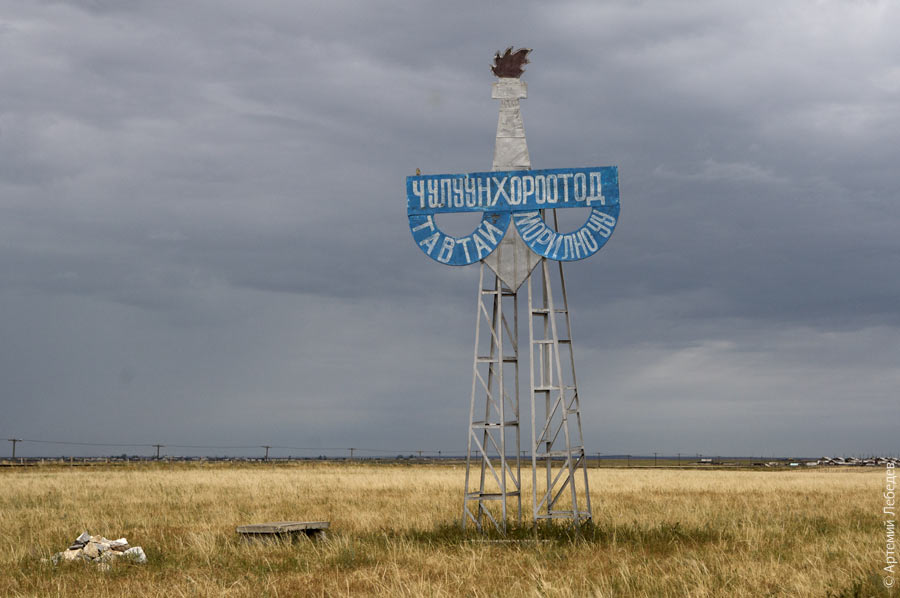 A few large buildings were built here at one point, but because there was no one to take care of them, everything got looted. The way Mongolians steal is funny—like they’re gnawing out one brick at a time. 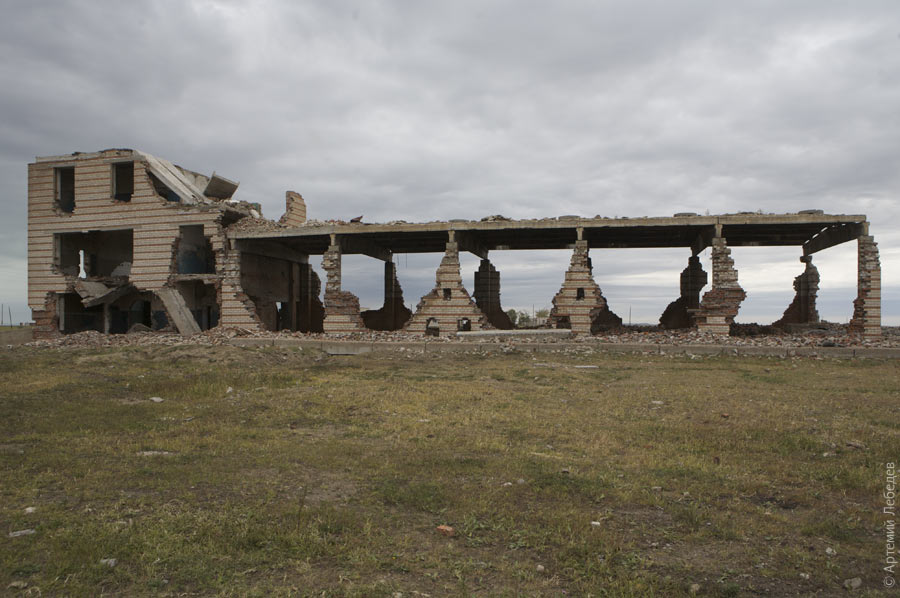 Driving around Mongolia is simple. There are no roads, but there are directions. To get from Ereentsav to Choibalsan, for instance, you simply have to follow the train tracks. 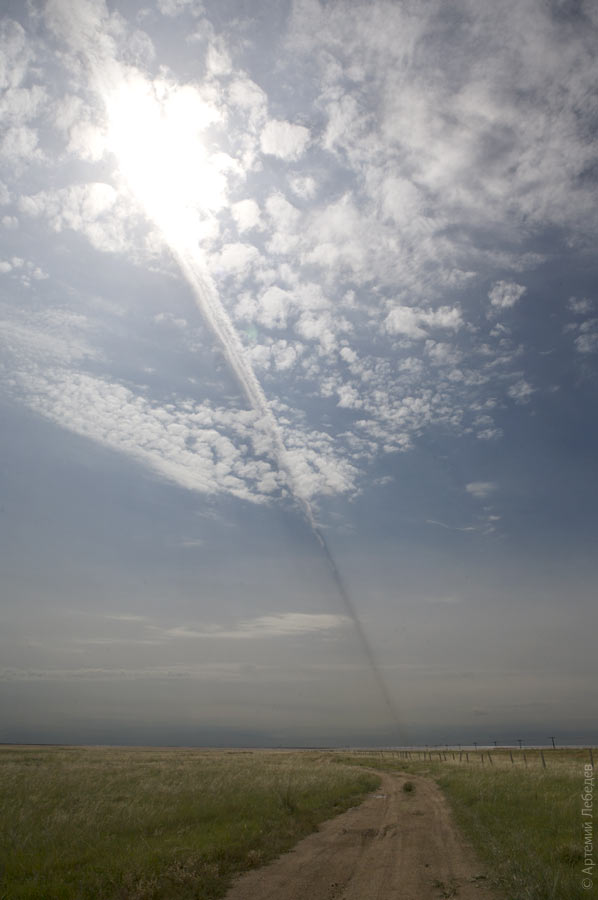 The expedition’s second Land Cruiser flipped over about 40 kilometers from the border (everyone survived once again). 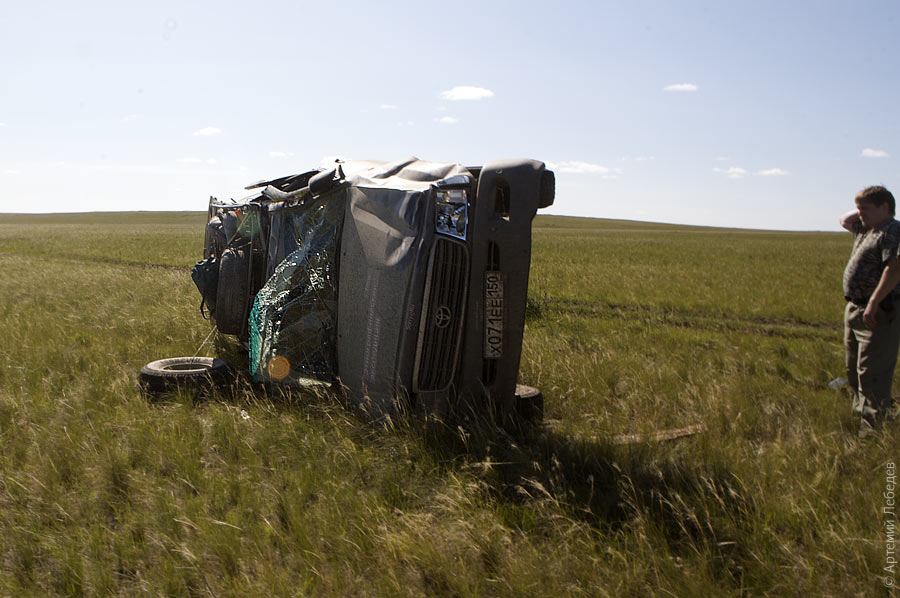 It took us the entire day to get it upright and start back towards the border. At night, I got stuck neck-deep in some horrible clay. It seems I became the only person in the world to try and drive a Range Rover off-road. 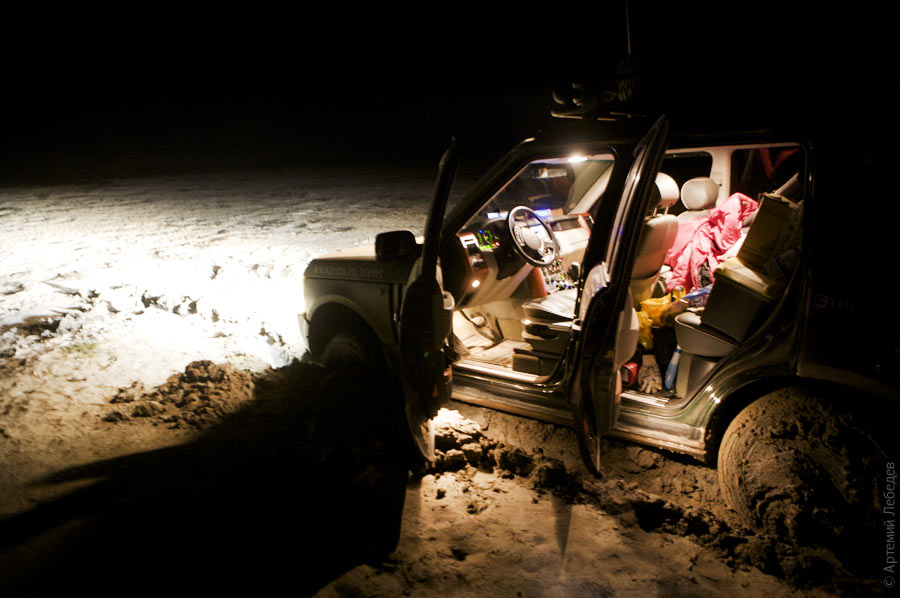 The next day, we accompanied the wrecked car to the border with Solovyevsk and then started back towards Ulaanbaatar. Two vehicles were left in the expedition: my Range Rover and a Subaru Impreza sedan. Because of the clay in the rims, driving faster than 50 kilometers an hour proved impossible—the car would begin to jolt violently from side to side. Towards evening, Choibalsan appeared on the horizon. ChoibalsanMapThe dirt road abruptly turns into tiled concrete slabs. This type of road surface is very common in Mongolia. 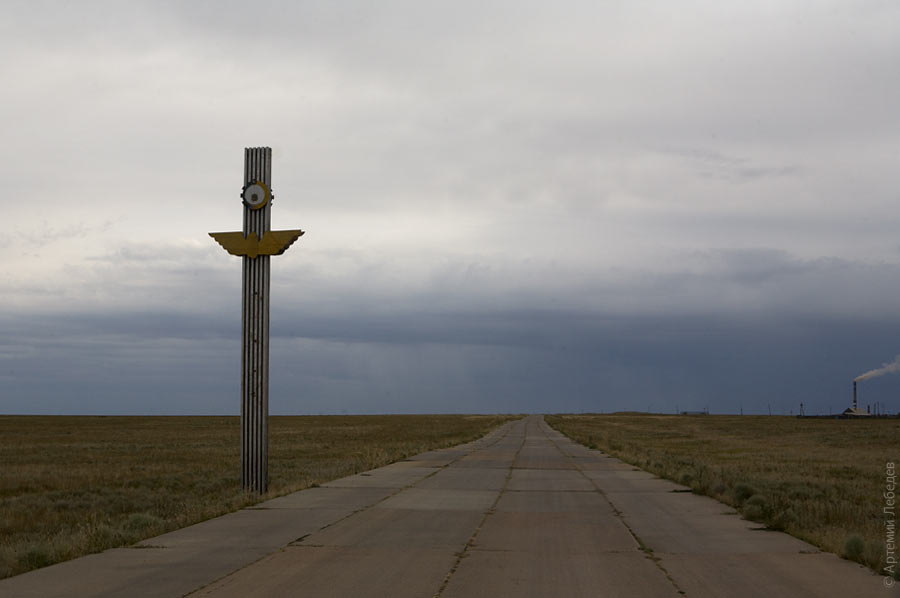 Just as abruptly, the red carpet into the city soon ends. The main landmark in Choibalsan is the smokestack of the heat and power plant. You can see it no matter where you are. 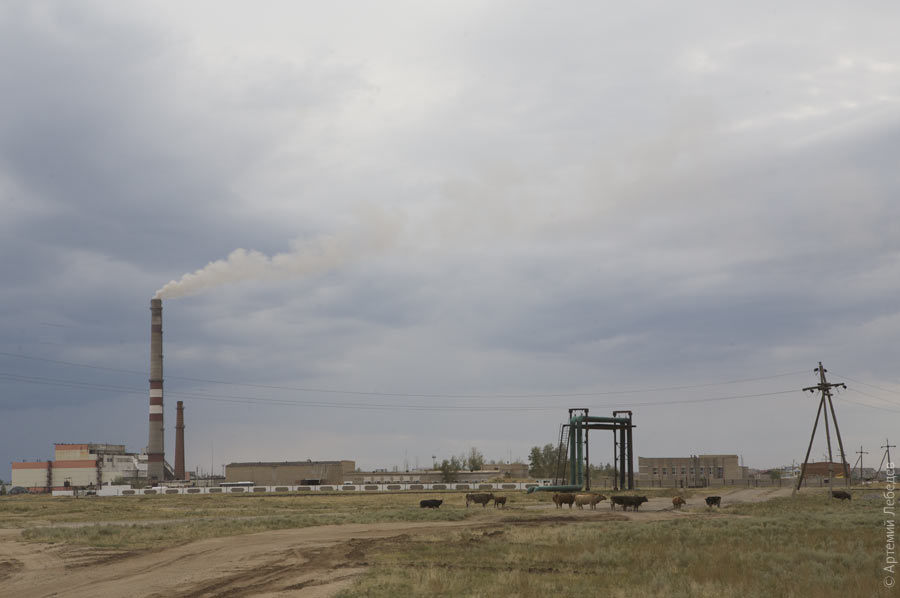 There’s concrete again downtown. 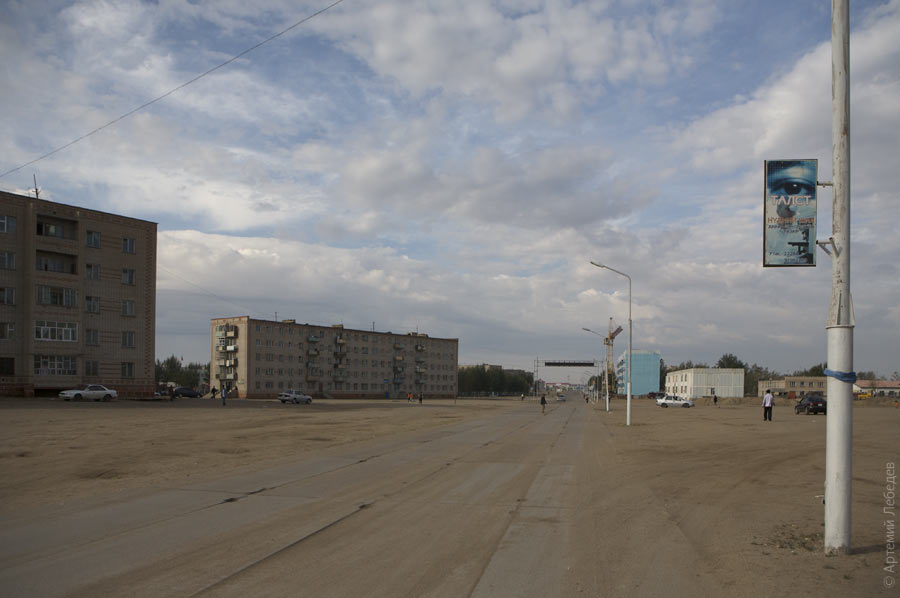 But not everywhere. For instance, although the main boulevard has been decorated with cosmic spheres, the dirt road around it was never upgraded. 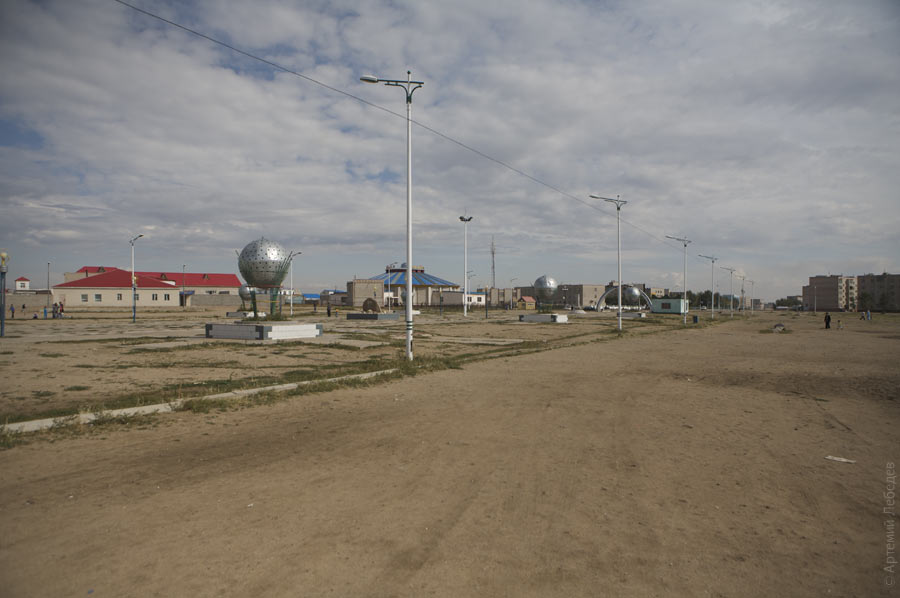 A ram’s head on the ground across from a kindergarten surprises no one. 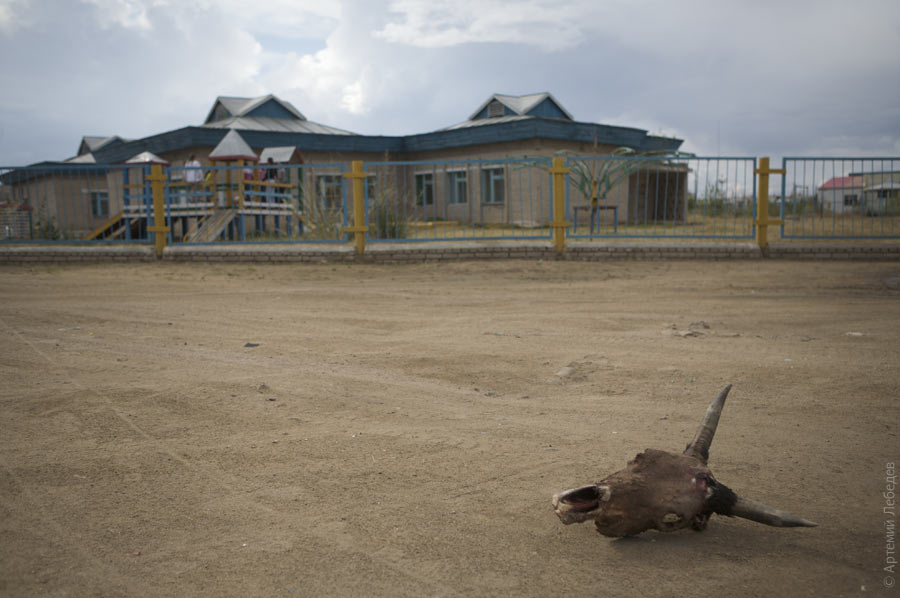 All the hotels were full for some reason. So instead of sticking around, we decided to move out towards Ulaanbaatar and spend the night in the steppe. About 30 kilometers from the city, I felt a familiar vibration. Sure enough, the engine had fallen out for the third time. This time, it was the motor mount bolts that broke. In the morning, we set out to find a repair shop. The city may not be much to look at, but it has everything you could need. An English-speaking mechanic took Moumousique in for repairs. I came up with an original dust cover design—since they didn’t have any new dust covers, I had to assemble it from two old ones. 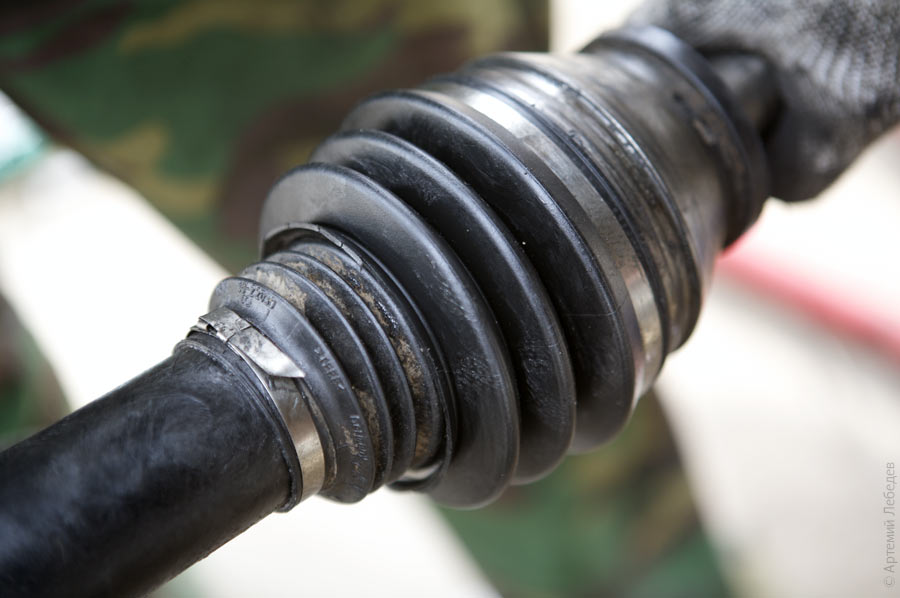 The city is considered to be progressive and dynamic. 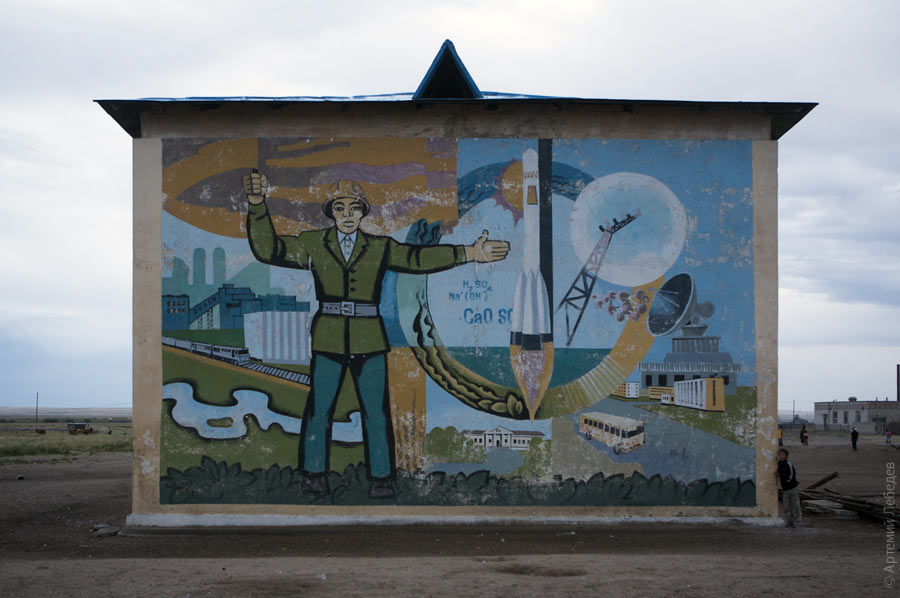 Although occasionally it feels like time is standing still here. 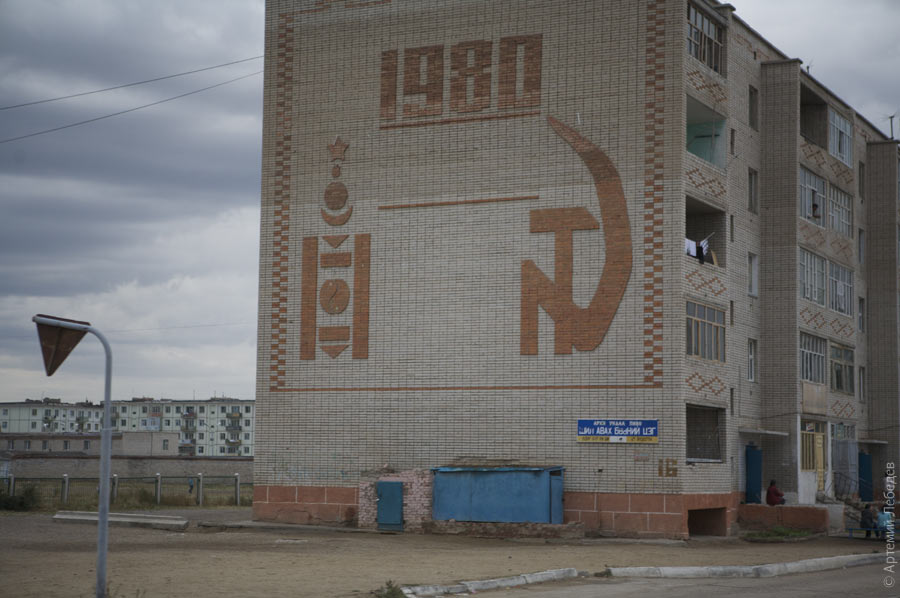 In the 80s, we also had an assortment of unclaimed concrete products lying around everywhere in Russia. 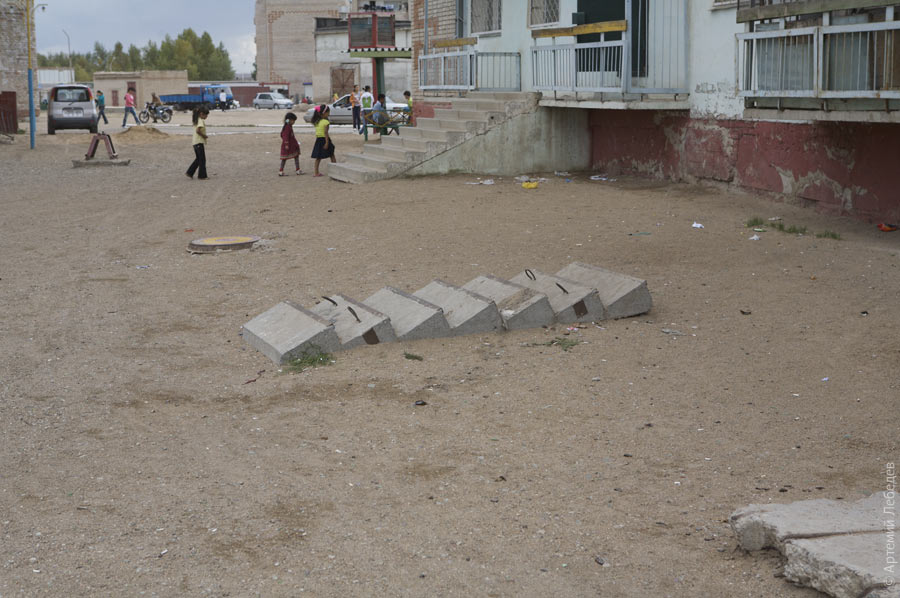 The traffic sign poles were designed locally.  Occasionally you come across bright LED billboards with information and ads. 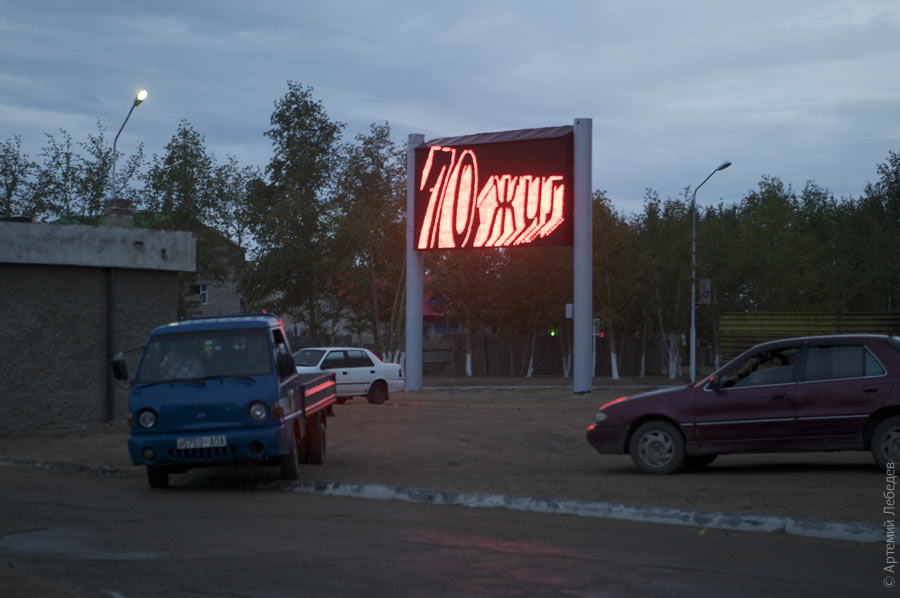 All the stores in Mongolia sell Russian and Chinese products. The labels—whether Russian or Chinese—are never translated. 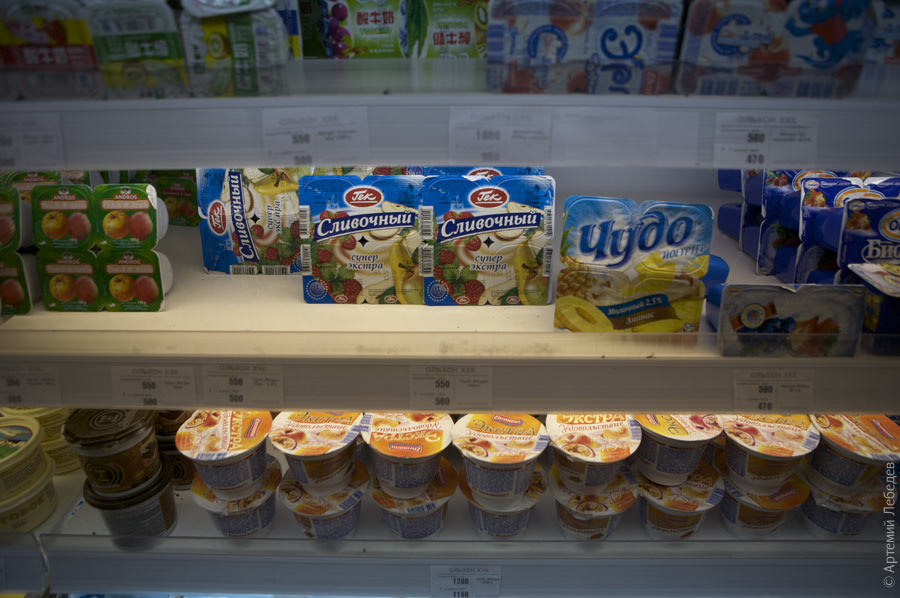 At the end of the day, we set out towards Ulaanbaatar once again, spending the night in the steppe. The following morning, the coolant level warning lit up on my dashboard. The reservoir turned out to be full of engine oil instead of coolant (later, I would find out that the oil cooler had gotten punctured). Thick white smoke was coming out of the exhaust pipe. I couldn’t keep driving like this for long if I didn’t want to irreparably damage the engine. UlaanbaatarMapIn the wee hours of the morning, a ZIL truck with a wagon pulled into the capital of Mongolia. 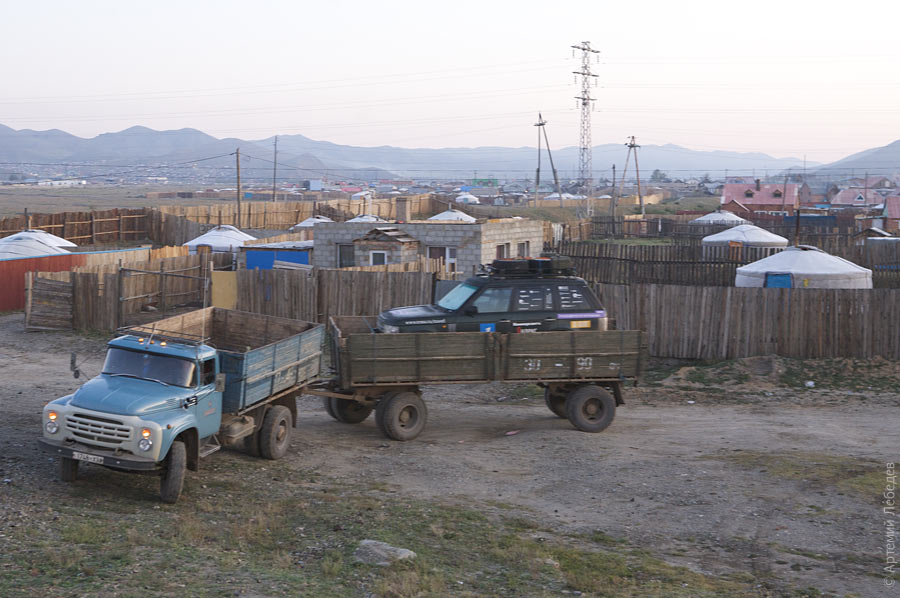 The city has improved considerably in the two years since I was last here. 2006: 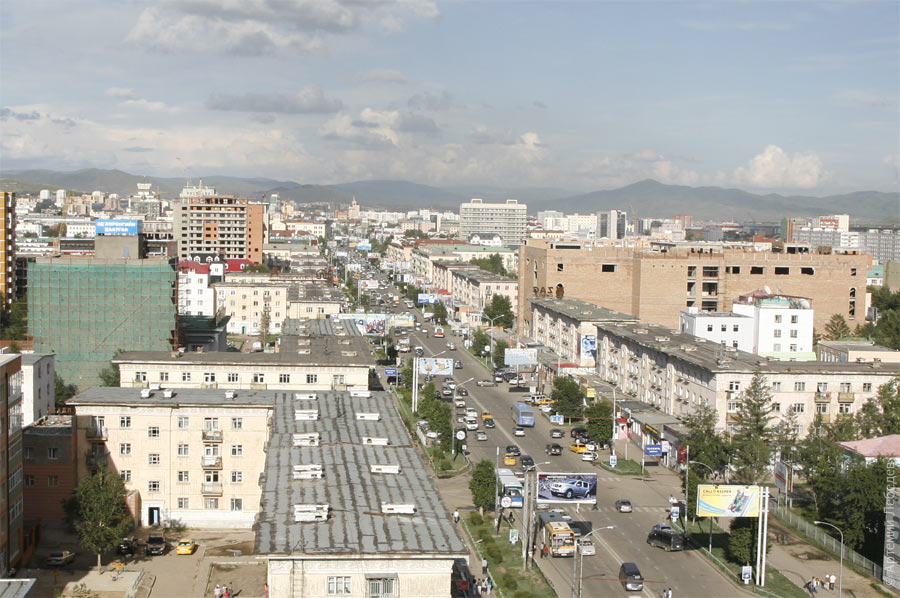 2008: 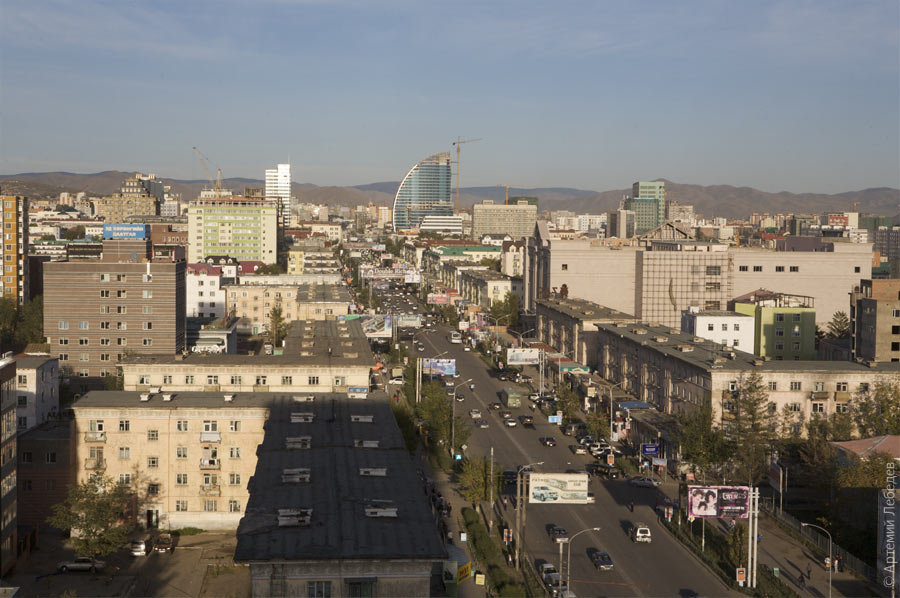 There’s construction everywhere. And I’ve never seen so many hotels anywhere else in my life. In terms of their development level, the hotels are most similar to Taiwan’s. 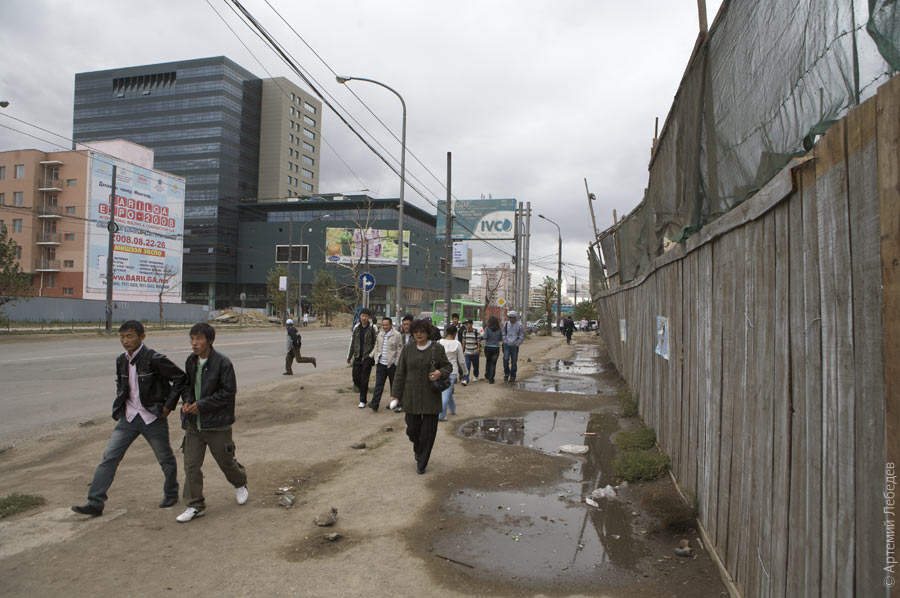 A small riot of some sort took place here this summer, resulting in the burning of the communist party headquarters and the looting of the national gallery. The expensive hotel right next to the burned building was left completely untouched—and that’s where all the Western correspondents stationed themselves to watch the events unfold.  A post box. 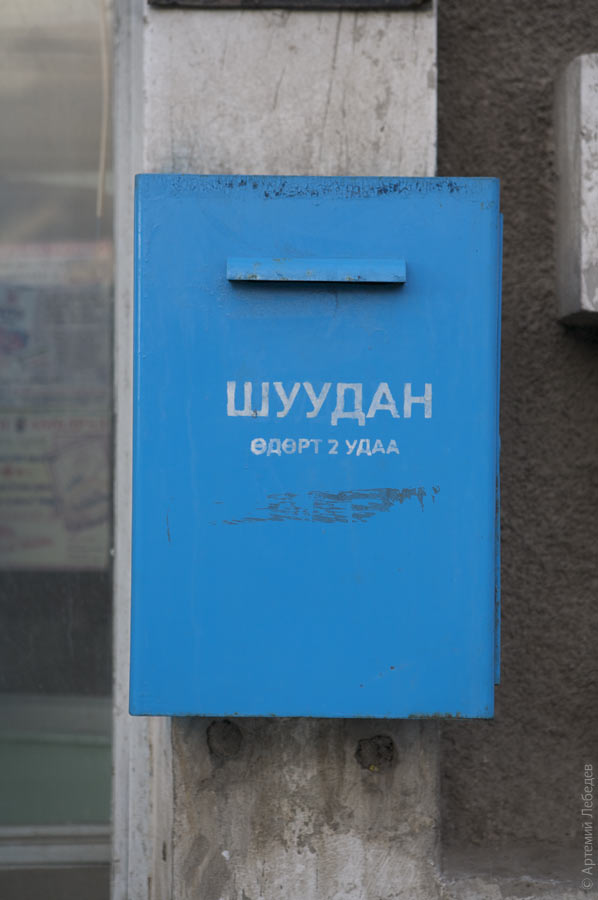 An ashtray in the form of a cigarette filter. 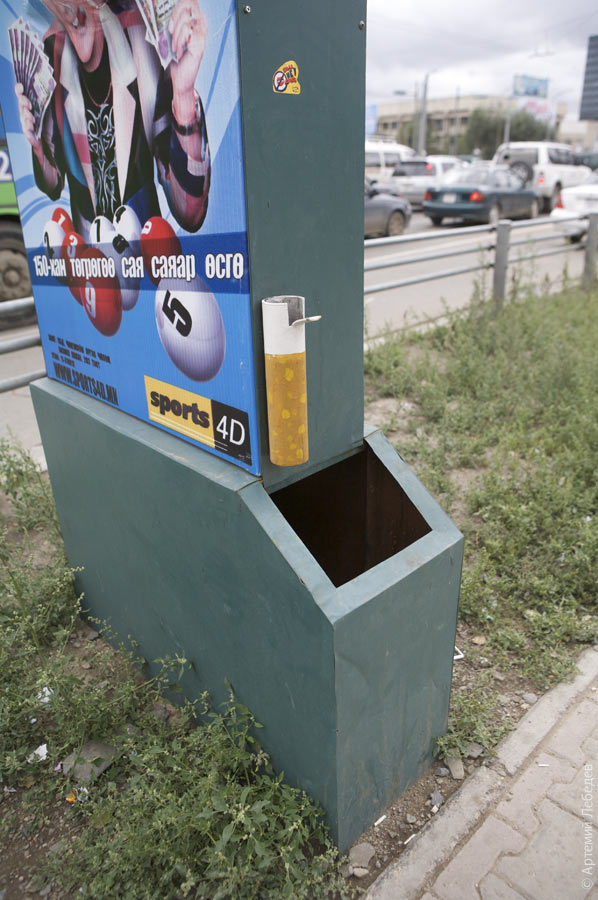 A national ornament used as a traffic sign mounting bracket.  Car owners in Mongolia can order either an elongated or compact license plate design to suit their taste (like in Libya). It makes so much sense. 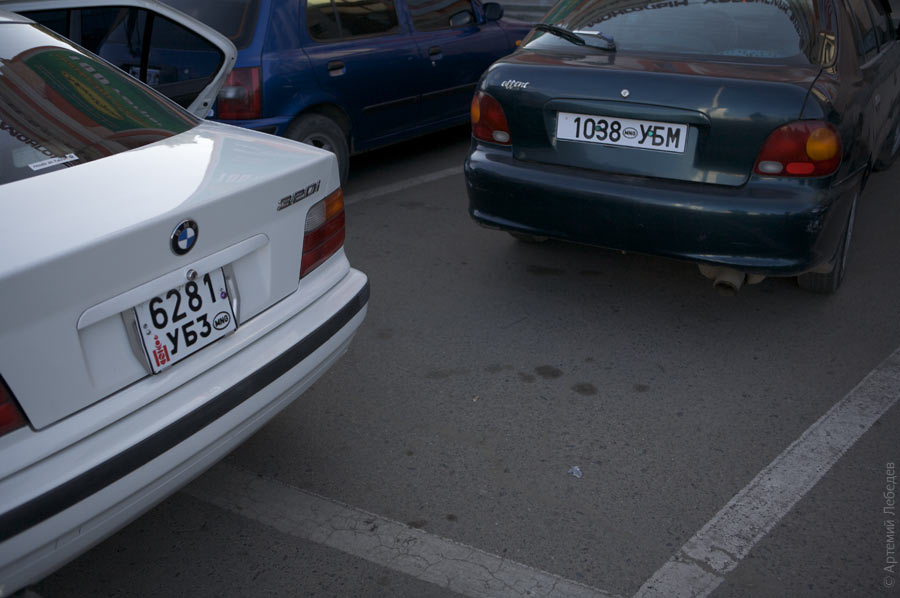 I had an entire week to explore Ulaanbaatar. What stood out the most was that you can walk around any building on foot and cut through any courtyard. This was once the case in Moscow as well, but now there are fences everywhere, forcing pedestrians to follow the streets in order to get around a building.  No one is surprised to see workers burning tires on the roof of a residential building all day long. 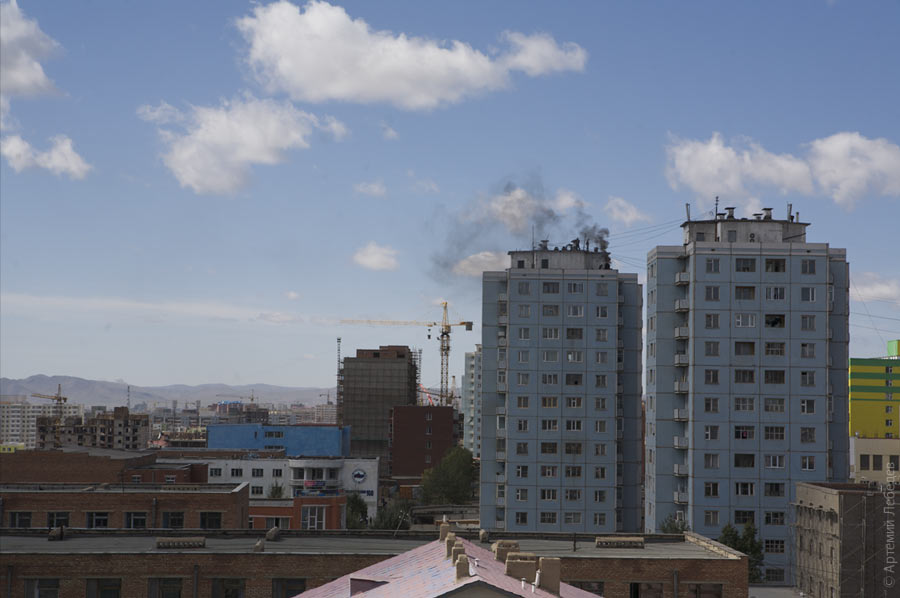 When it became clear that fixing my car would take at least a month (the engine had to be fully disassembled and repaired), I bought a plane ticket back to Moscow. 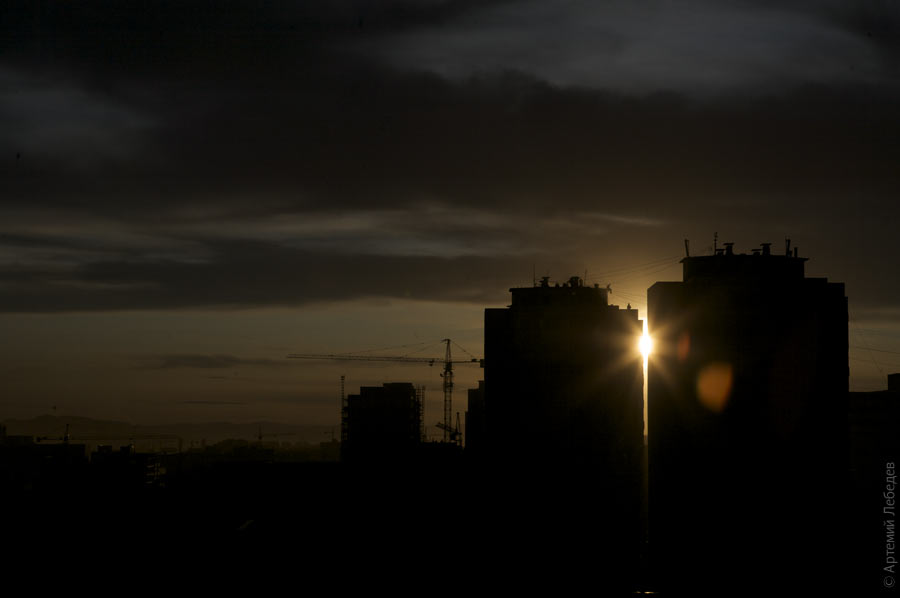 I managed to travel to Kiev, Kaliningrad, Scotland, London (three times), Morocco, and Trieste and Rome before returning here. |